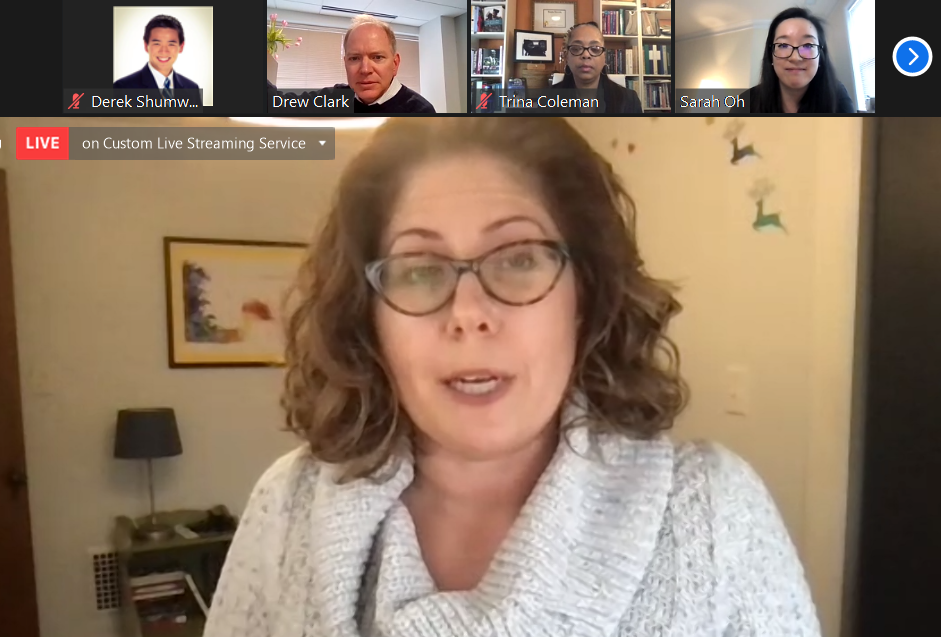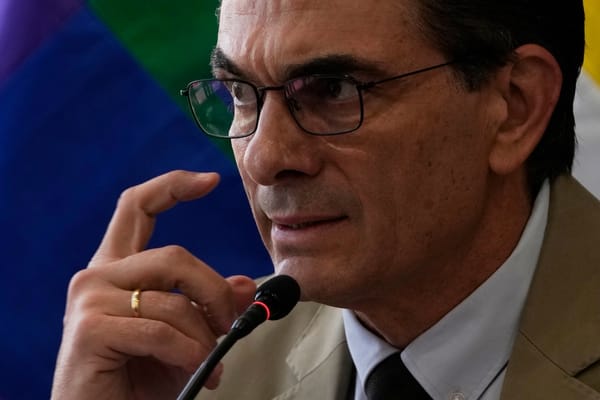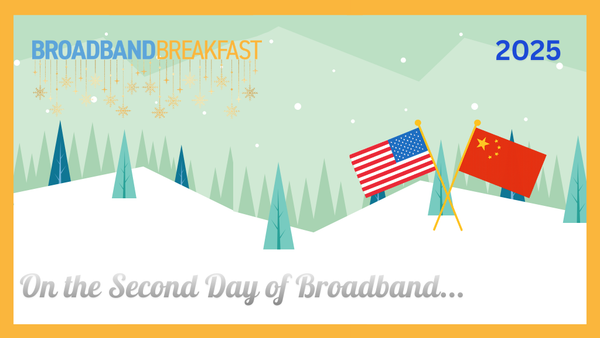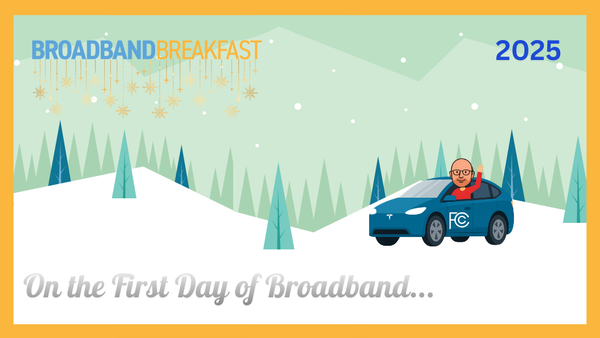FCC Should Prioritize Affordability and Digital Literacy with Emergency Broadband Funds
January 29, 2021—FCC Acting Chairwoman Jessica Rosenworcel announced Thursday that she will convene a virtual roundtable discussion on February 12, 2021 to gather public input on how to structure the Emergency Broadband Benefit Program. The $3.2 billion initiative, funded through Congressional appro
Derek Shumway

January 29, 2021—FCC Acting Chairwoman Jessica Rosenworcel announced Thursday that she will convene a virtual roundtable discussion on February 12, 2021 to gather public input on how to structure the Emergency Broadband Benefit Program.
The $3.2 billion initiative, funded through Congressional appropriations in the Consolidated Appropriations Act of 2021, will enable eligible, low-income households to receive a discount on the cost of broadband service and certain connected devices, throughout the COVID-19 pandemic.
A panel of policy experts convened for a Broadband Breakfast Live Online event on Wednesday agreed subsidies from the federal government need to be spent wisely in order to get the most effective possible outcome from the federal program.
“The FCC should better define its objectives and collect data to ensure it is getting the most bang for its buck,” said Sarah Oh, research fellow at the Technology Policy Institute, adding that the agency has the resources to create better plans for data collection and analysis in preparation for the program’s disbandment.

In an initiative spearheaded by Oh, the Technology Policy Institute recently filed comments to the FCC on ways the agency could maximize the effectiveness of the program, and further, how the agency can learn from the program to continue addressing the digital divide beyond the pandemic.
TPI finds that the FCC’s objectives should be a combination of getting people connected and keeping people connected. Oh said the agency should both target households at risk of disconnection and encourage households without broadband connections to subscribe, with the federal aid.
Executive Director of the National Digital Inclusion Alliance, Angela Siefer, urged the agency to prioritize affordability and digital literacy measures. “We can’t focus all our attention federally on the rural availability and miss out on the fact that there are 26 million households in the U.S. that don’t adopt broadband in urban areas,” she said.
The digital divide is “less about availability and more about affordability and digital literacy,” said Siefer.

While Trina Coleman, board member at the U.S. Distance Learning Association, said the agency should use the funds to increase adoption initiatives, she recognized that adoption can be a tricky subject.
Coleman highlighted the fact that some may be weary to participate in the program, due to an overall distrust of the government. She added that older populations may be satisfied with functionalities offered by mobile phones, and may not want to adopt broadband.
The panelists agreed that broadband data remains largely unavailable and called for the agency to gather better data on where broadband exists and where it does not. Coleman highlighted that only 22 states contribute data on where broadband exists to the National Broadband Availability Map, leaving more than half of the United States with no data on it.
This event is part of a six-part event series, “A No-Nonsense Guide to 5G,” on Broadband Breakfast Live Online.
A No-Nonsense Guide to 5G’ sponsored by:

Events in “A No-Nonsense Guide to 5G” include:
- Wednesday, October 14, 2020, 12 Noon ET — “A No-Nonsense Guide to 5G: The Hype and the Reality of 5G”
- This opening panel will set the stage for Broadband Breakfast Live Online’s consideration of the policy, technology and practical questions around the 5G wireless standard. What is 5G, and why is there so much buzz about it? How much of an improvement is it over prior generations of wireless? In other words: What is real, and what is hype? How the issues of trusted partners, rights-of-way deployment, and spectrum policy interact? Where is 5G seeing early successes, and what are the stumbling blocks?”
- Wednesday, October 28, 2020, 12 Noon ET — “A No-Nonsense Guide to 5G: National Security and Trusted Partners”
- This panel will consider the global landscape for the 5G equipment ecosystem. It will consider issues in core networks, radio access networks and in handset equipment. How has the global landscape changed? Will 5G benefit from – or suffer because of – a new Cold War with China? How are American companies reacting to federal government initiatives for trusted partners? Where can the U.S. turn for solutions and alternatives to Chinese manufacturers?
- Wednesday, November 18, 2020, 12 Noon ET — “A No-Nonsense Guide to 5G: A Case Study of Transformative Apps in the Enterprise”
- 5G is seeing its first real successes in the enterprise marketplace. To glimpse the future more accurately, Broadband Breakfast Live Online will consider case studies of applications in enterprise environments. What technologies and processes bring 5G success to the business marketplace? What needs to happen to bring 5G successes to the consumer marketplace?
- Wednesday, December 9, 2020, 12 Noon ET — “A No-Nonsense Guide to 5G: Wireless Infrastructure, Municipal Rights-of-Way and the 5G Rural Fund”
- To realize the promise of 5G, far more base stations — wireless infrastructure facilities — will be necessary. 5G facilities and towers may not be as big as in previous generations of wireless technology. Still, the need for far more facilities has already created tensions with municipalities over rights-of-way. How can these conflicts be minimized? What are smart cities already doing to expedite wireless infrastructure deployment? Can the process be improved?
- Wednesday, January 27, 2021, 12 Noon ET — “A No-Nonsense Guide to 5G: The Adoption and Use of 5G Broadband”
- What are some of the likely drivers of 5G equipment and services? How have existing consumer use cases been received? Are there 5G use cases that could help close the digital divide by elevating broadband utilization among communities of color and low-income populations? What can we expect from 5G technology in 2021?
- Wednesday, February 10, 2021, 12 Noon ET — “A No-Nonsense Guide to 5G: Spectrum Policies to Advance Better Broadband”
- More than simply the next generation of wireless technology, 5G deployments make use of radio frequencies from an extremely wide range. For example, some 5G deployment are using mid-band spectrum between 3.4 GigaHertz (GHz) and 6 GHz. But 5G networks also promise tap into spectrum between 24 GHz and 100 GHz. It deploys these millimeter bands using network slicing and other advanced wireless tools. What new spectrum policies are necessary for 5G to flourish?
As with all Broadband Breakfast Live Online events, the FREE webcasts will take place at 12 Noon ET on Wednesday.
SUBSCRIBE to the Broadband Breakfast YouTube channel. That way, you will be notified when events go live. Watch on YouTube, Twitter and Facebook.
See a complete list of upcoming and past Broadband Breakfast Live Online events.











Member discussion